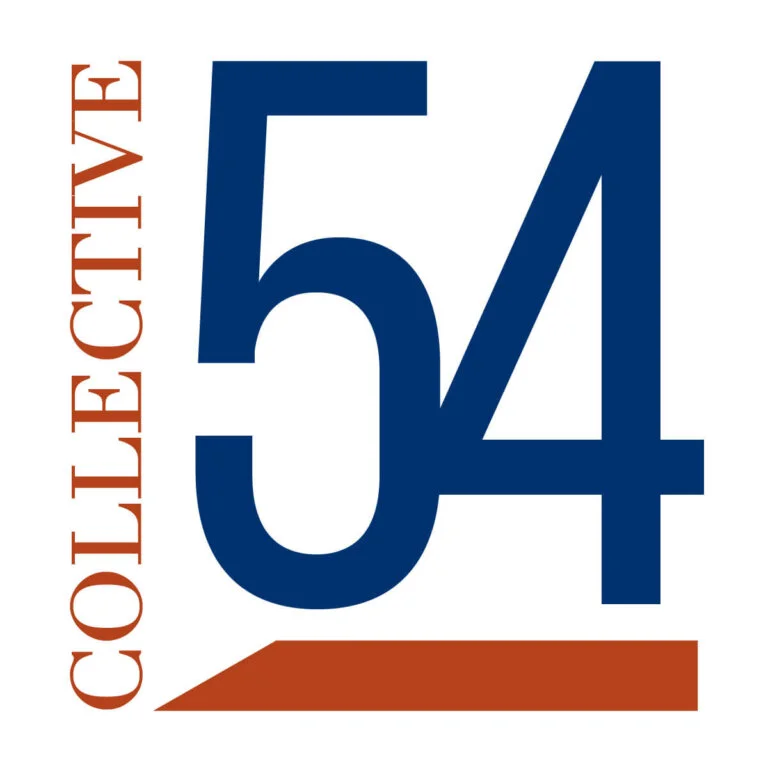|
Getting your Trinity Audio player ready... |
In January 2020, we started Collective 54 to deliver better outcomes for founders of boutique professional services firms. We had experienced the operational grind, strategic ambiguity, and struggles that often define this knowledge sector. Our goal was to help Collective 54 members make more money, make scaling easier, and make an exit achievable.
Fast forward five years, and fifty member firms have sold.
Some firms sold to strategic buyers, others to private equity investors, and we’ve even had members buy other Collective 54 member firms.
The number without context is less impactful. The exits prove that professional service firms can generate real enterprise value. They prove boutique founders can create generational wealth and do so without external capital. They prove that a focused and structured community designed specifically for the intricacies of pro serv will outperform isolated decision-making.
These exits were not spontaneous or accidental. They were the result of great planning and execution by founders and leadership teams who rallied around the goal of a successful exit. Founders stopped operating reactively “in” the business and shifted to working “on” the business. They eliminated single points of failure. They built leverage into sales, pricing, delivery, and leadership. They exited with control because they eliminated the firms dependence on them as the founder.
Members used the depth of knowledge and resources within the Collective 54 community. They rebuilt their firms’ people, processes, and technology to increase equity value. They applied the templates, benchmarks, and design principles that we talk about non-stop in Collective 54. They stopped improvising or trying to apply ineffective concepts that are meant for product companies.
“Taking on a PE partner for my growing consulting firm was one of the biggest decisions of my life. The Collective 54 community gave me the playbook and support I needed to prepare for a successful transaction. From picking an investment banker, structuring the deal, to choosing the right buyer, the guidance was instrumental in helping me achieve a great outcome.” Matt Rosen, Founder of Allata, an IT Services Provider.
It is rewarding to watch these exits unfold. Not because of deal size or headlines, but because they represent personal inflection points for founders who reengineered their firms with discipline. They realized their dreams with life changing exits that created generational wealth. As one member said, “my children will never worry about money.”
That impact is what gets me up in the morning and has me working on this article as the sun comes up.
“In my experience, Collective 54 members approach the market better prepared than most founders. They understand what buyers want, which streamlines the transaction process and consistently leads to stronger outcomes.” Greg Fincke, Managing Director, Co-Head Americas of Equiteq, a global investment bank.
These are not abstract success stories. These are real founders who had the courage to start a firm, built it into a company with happy clients and loyal employees. They are stories of vision and resilience.
Greg’s $162 million exit from a 30-person firm in 2017 was NOT an anomaly. It was the prototype. The subsequent 50 exits are replication data.
What I’ve Learned from 50 Exits
1. If You’re the Business, You Can’t Sell It
After watching these exits, I can tell you with absolute certainty that removing the founder bottleneck is non-negotiable if you want a premium valuation. In every deal, the acquirer’s biggest fear is that when the founder walks out the door, the business walks with them. The firms that commanded the highest multiples had already shifted beyond founder heroics. They created a commercial sales engine that didn’t depend on the founder’s personal network. They replaced tribal knowledge with documented processes and productizing services, so they’re delivered consistently. They built leadership teams who could run the business without constant check-ins and founder involvement. When done right, clients get the same (or better) results, freeing the founder to focus on strategy, market positioning, and value creation ahead of an eventual exit. If your name is still on every key decision, proposal, and deliverable, you’re not ready to sell.
2. Land and Expand
The second lesson is that the most valuable firms don’t rely on only winning new logos. They excel at selling new work to their existing clients. In exit negotiations, acquirers fixate over predictable, recurring revenue streams, and expanding inside accounts where trust is already built. The top performers had account expansion baked into their operating model. They had dedicated client success roles, structured account reviews, and a clear roadmap of additional services tailored to each client’s evolving needs. This wasn’t accidental upselling. It was a disciplined, metric-driven approach to increasing wallet share. Contrast that with firms addicted to the chase for new business. They burned resources on long sales cycles, faced unpredictable win rates, and were more exposed to external market swings. The firms that sold for a premium had flipped the script where 60% to 80% of their growth came from the clients they already had, making their services both stickier and revenue more scalable.
3. The Riches are in The Niches
The next lesson is that the riches are in the niches. If you’ve been a member for a while, you’ve certainly heard us say this. These fifty exits are the data to back it up. The firms that sold for the highest multiples didn’t try to be everything to everyone. They owned a clearly defined market segment and became the go-to authority in it. This focus allowed them to charge a premium, deliver faster with higher margins, and dominate mindshare with both clients and competitors. Acquirers love this because niche firms are harder to displace and face less pricing pressure. On the flip side, the generalist firms I’ve seen exit often struggled to articulate what truly made them different, this made them more of a commodity and less of a must-have asset. You’re not just another service provider when your positioning is razor sharp, your marketing is targeted, your delivery is specialized. You’re the market leader in your lane, and buyers will pay up for that.
Read the full press release here: 50 Professional Services Firms Successfully Sold with Support from Collective 54
4. Risk is a 4-Letter Word
The fourth lesson, and maybe the most overlooked lesson, is that successful deals are all about minimizing risk for the acquirer or investor. Buyers don’t pay top dollar because they “think” your firm might grow. They pay top dollar because they believe it will keep growing without surprises. They are buying the future, not the past. Every risk you remove from client concentration, dependency on a handful of rainmakers, shaky financial reporting, and unprotected IP pushes your valuation higher. The best-run firms treat de-risking as a strategic and continuous discipline. They diversify client portfolios, multi-threaded relationships inside accounts, and execute clean contracts with clear renewal terms. Their financials are rock solid and they have airtight operating processes. By the time they go to market, they’ve turned themselves into a “low-drama” acquisition, where the buyer’s post-close playbook is about scaling, not fixing. The simple reality is that risk can cost you millions and ultimately cost you a successful exit. The founders who understood this before going to market consistently walked away with bigger checks and cleaner deals.
5. Avoid the More Trap
At dinner in January 2020, Greg asked me the biggest lesson I had learned with my previous firm. Without hesitating, I said “focus” because without it, you’ll never build a successful firm. I saw this play out in the exit by Collective 54 members. The key is to avoid the “more trap.” This is the founder instinct to believe that more services, more markets, more headcount, and more revenue automatically equal more value. In reality, for professional services firms, “more” often means diluted positioning, operational complexity, and eroded margins. Exactly the opposite of what acquirers want. The top exits I’ve seen were ruthlessly focused. They offered fewer services to a clearly defined client profile, scaled delivery through repeatable processes, and resisted the temptation to chase every opportunity. The firms caught in the more trap often went to market looking busy but not profitable, big but not differentiated. Remember, buyers aren’t paying for how much you do they’re paying for how well you it, and the EBITDA it generates.
“Collective 54’s fiftieth successful member exit marks a unique achievement that speaks to the financial and operational success of C54 members and the unique preparation those members have received within the community. I’ve had the pleasure of representing several C54 members on their exits, and in my experience, they come to the deal table with a level of sophistication and readiness far surpassing the average founder. That makes them great clients, and more importantly, ideal partners for their buyers.” Emanuel Clark, M&A Counsel at Winstead PC, a corporate law firm.
The Pattern
After watching founders navigate successful exits, the pattern is crystal clear. Premium outcomes, valuation, and deal terms go to those who focus on the critical value creating levers and execute them consistently, not perfectly.
None of the best exits I’ve seen were flawless. Every founder and firm had gaps, but they had the discipline to prioritize what mattered most and make steady progress toward building a firm that could thrive without them. Progress over perfection. Focus, compounded over time, is what gets you the premium deal with great terms.
“For founders of small service firms, the idea of an exit often feels out of reach. Collective 54’s 50th exit is proof that it’s not just possible — it’s happening. Greg has been a guest on Built to Sell Radio more than once, and his stories consistently inspire founders aiming for the finish line.” John Warrillow, Founder, The Value Builder System
Looking Ahead
I believe future acquirers will seek firms that optimize for AI delivery, leverage, automation, and digital repeatability. Founders without intelligence layer will be discounted. Firms combining human expertise with scalable AI systems will command premiums. They will combine delivery precision with embedded intelligence. These firms will expand margins while doing so with repeatability to deliver the best outcomes for their clients. Firms that embrace this approach will be hot acquisition targets because they are stable, intelligent, transferable, and less risky than traditional firms.
The remaining question is who will be on the list of the next 50 exits?
If you want to be part of the next list, join us.

